Black-headed gulls in Texas are a common sight along the coast. However, the three species regularly seen undergo seasonal molting. Molting presents differences in appearance both seasonally and with age. Of the black-headed gulls regularly found in the state, only one is a year around resident, while the other two are migrants or winter residents. Please note that there is a Black-headed Gull – Chroicocephalus ridibundus. This article refers to black-headed gulls as a general description of the group that show this characteristic.
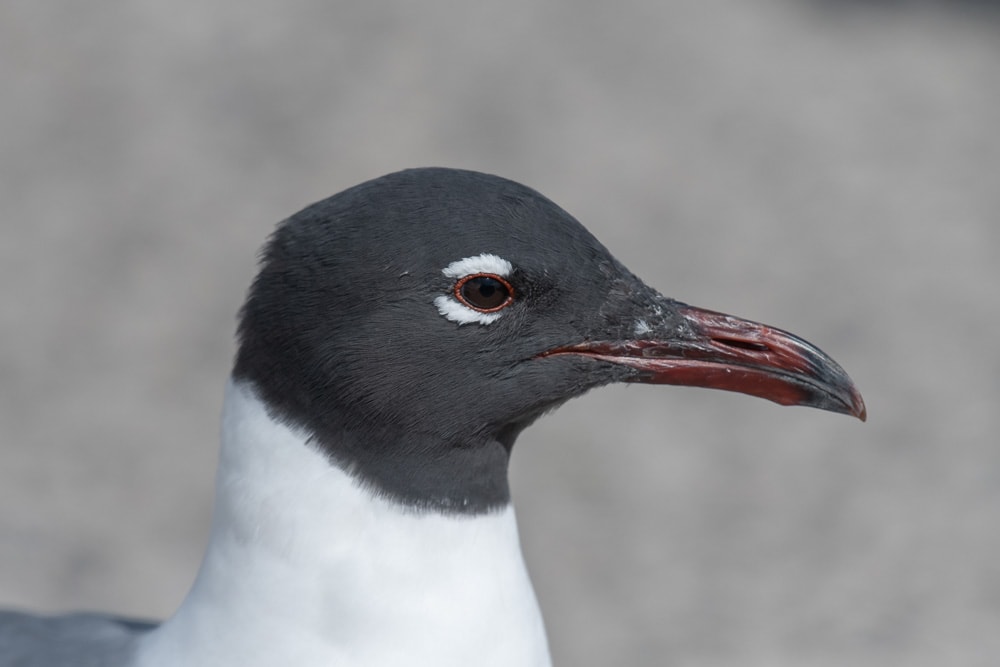
Laughing Gull, Leucophaeus atricilla – Common year around. Breeding
Bonaparte’s Gull, Chroicocephalus philadelphia – Short to medium range migrant and winter visitor to the Texas Gulf coast
Franklin’s Gull, Leucophaeus pipixcan – Long range complete migrant, winters mainly in the Southern Hemisphere. Seen along the Texas Gulf coast during northward and southward migration.
Sabine’s Gull, Xema sabini, is another small black-headed gull that winters in the Southern Hemisphere. It’s migration route is coastal or at sea and is a very rare visitor to coastal Texas. I will not include it for the purposes of this article.
Likewise the Black-headed Gull, Chroicocephalus ridibundus, is found along the Atlantic coast and Canadian maritime and unreported in coastal Texas.
The Little Gull, Hydrocoloeus minutus, has scant Texas coastal records and will also be excluded
Laughing Gull
The Laughing gull is the largest black-headed gull in Texas. A year around resident and breeder that is abundant and conspicuous along the coast and some inland lakes. Adult Laughing Gulls sport a full black head during the summer.
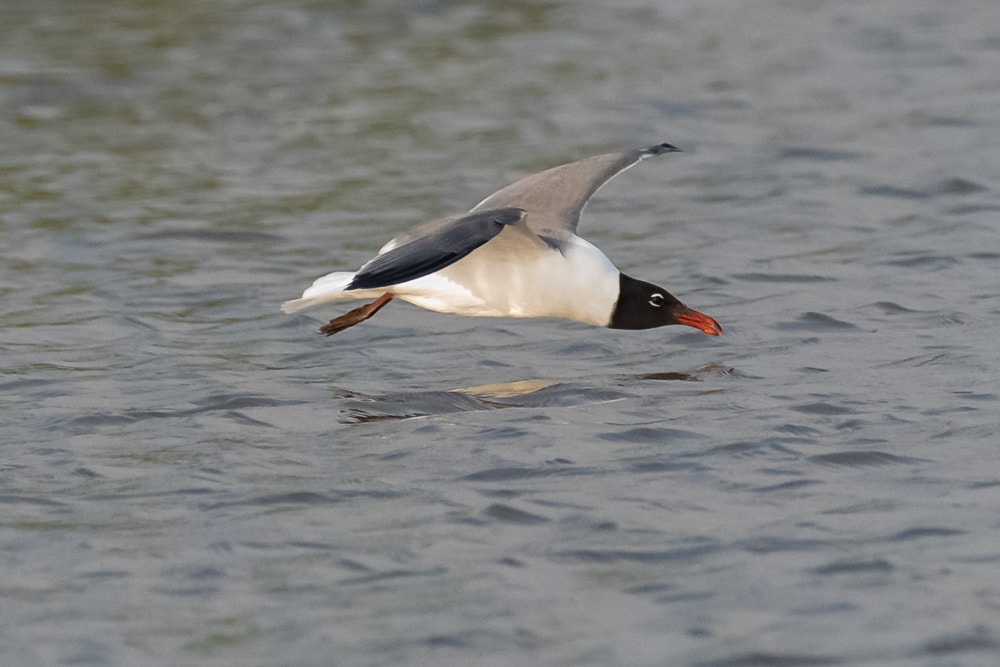

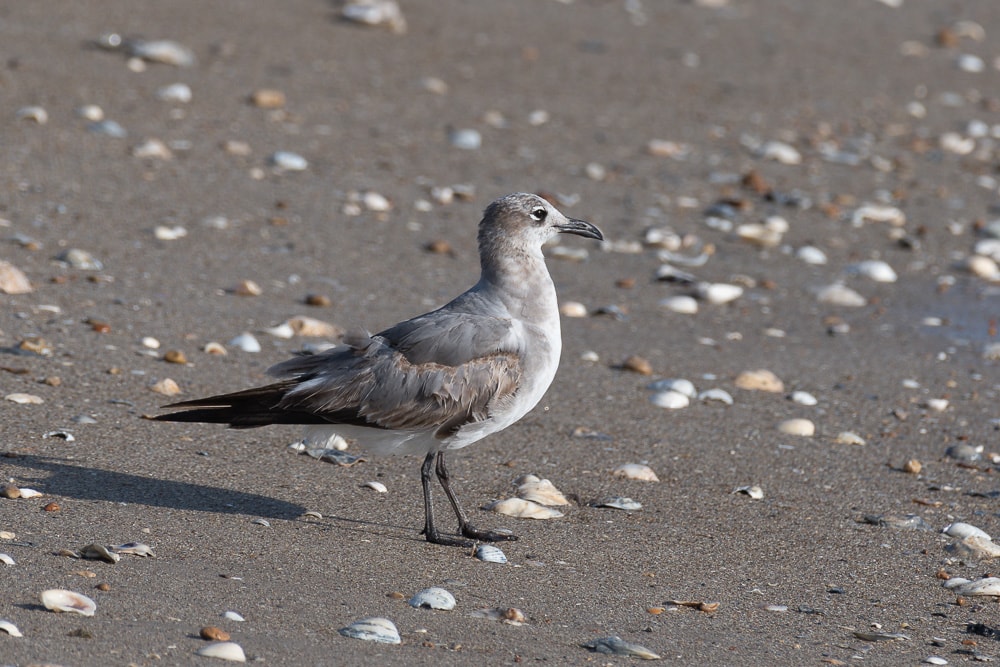
Bonaparte’s Gull
Although Bonaparte’s Gull is a black-headed gull in Texas, we rarely see them in that form. Most often they show a thin bill and a black spot behind the eye. Winter visitors lose their hood before arrival. Molt to breeding plumage with a full black head does not occur until most northbound migrants have passed through the state.
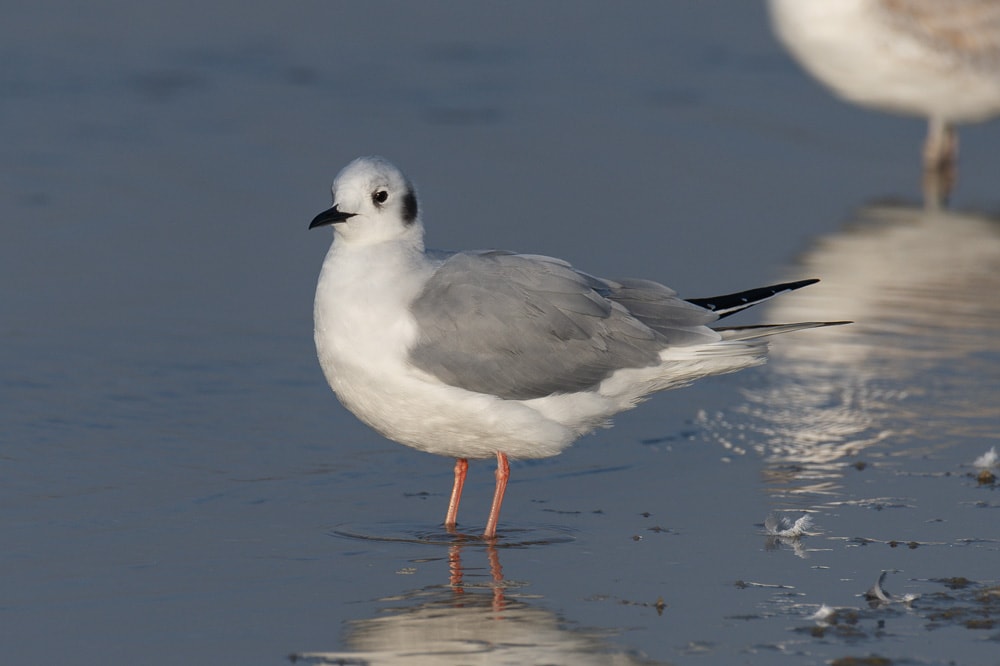
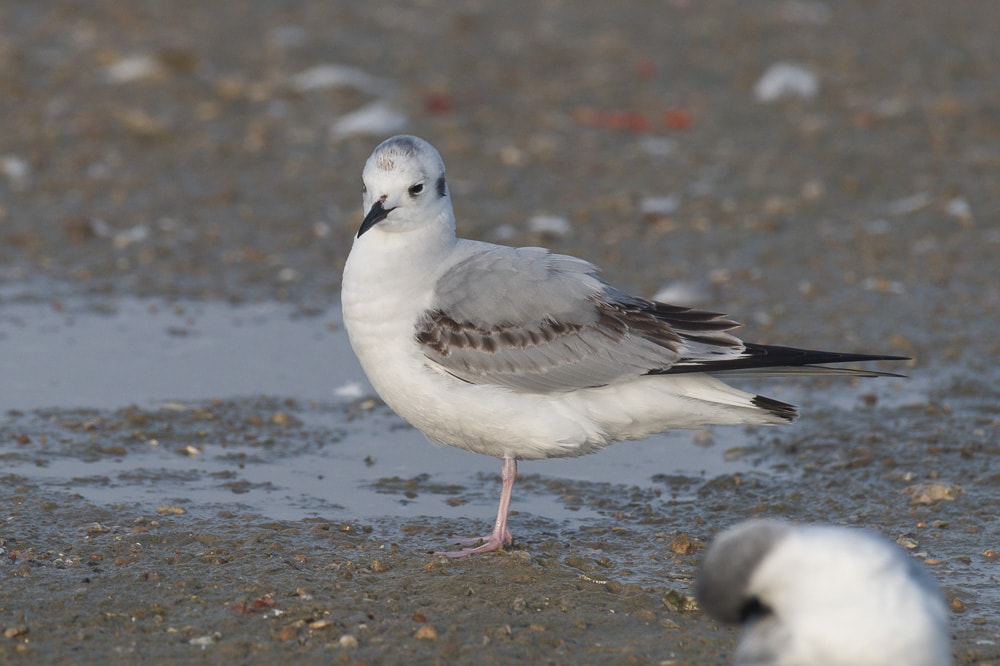
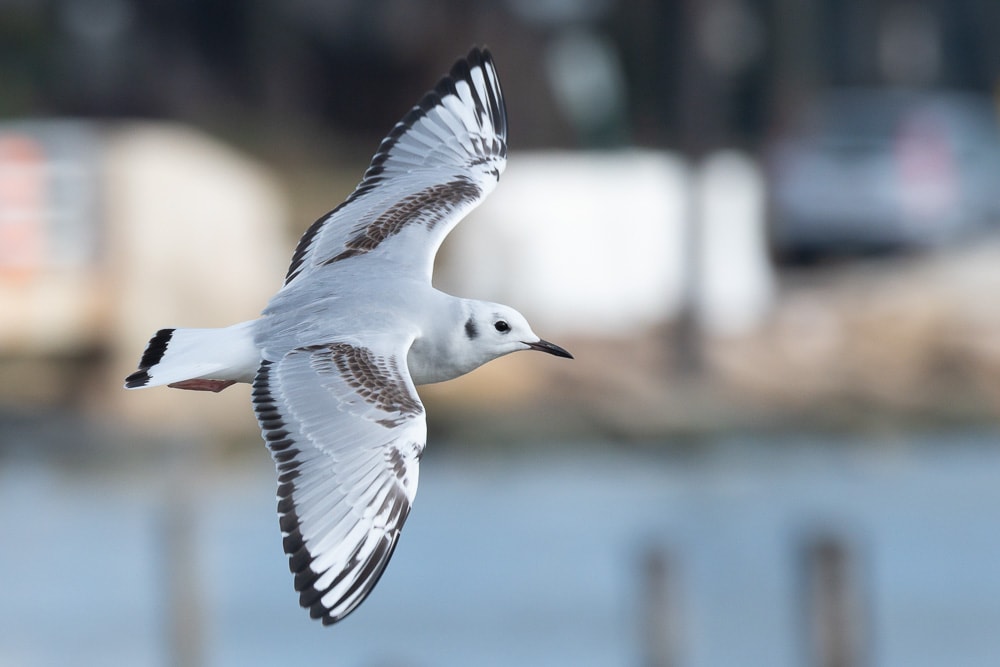
Groups of Bonaparte’s Gulls readily feed among wintering mergansers and other diving ducks. See this post for more detail on this observation.
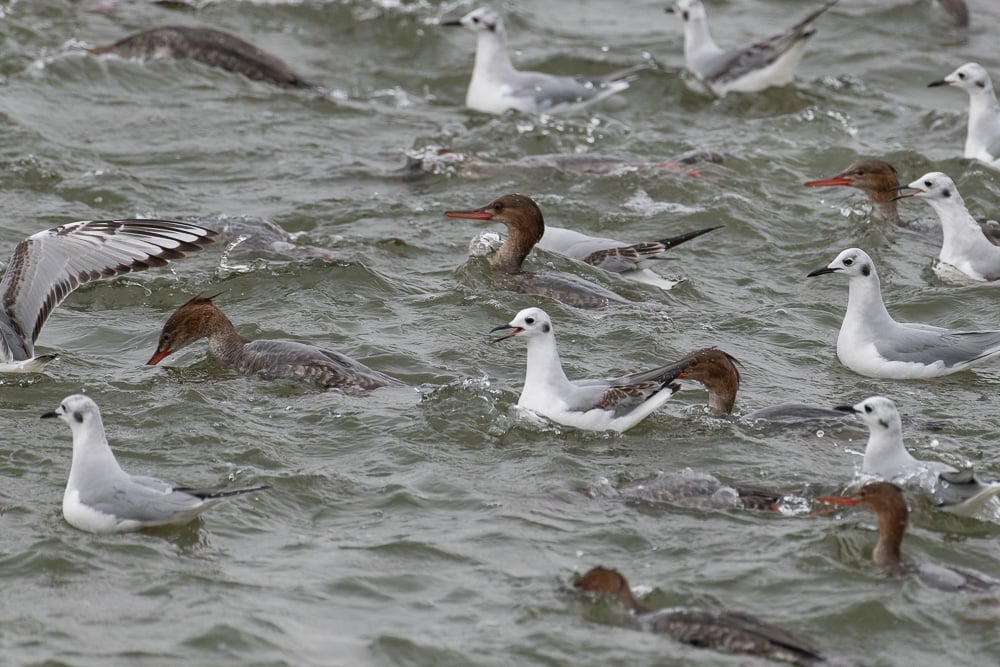
Franklin’s Gull
Franklin’s Gull, like Bonaparte’s only sports a full black head outside of its winter range. In addition because Franklin’s Gulls are complete migrants, fully black-headed individuals are only seen during northward migration and usually partial hoods on the southward leg. Franklin’s Gulls are rare in winter in the northern hemisphere. (with exceptions – keep reading)
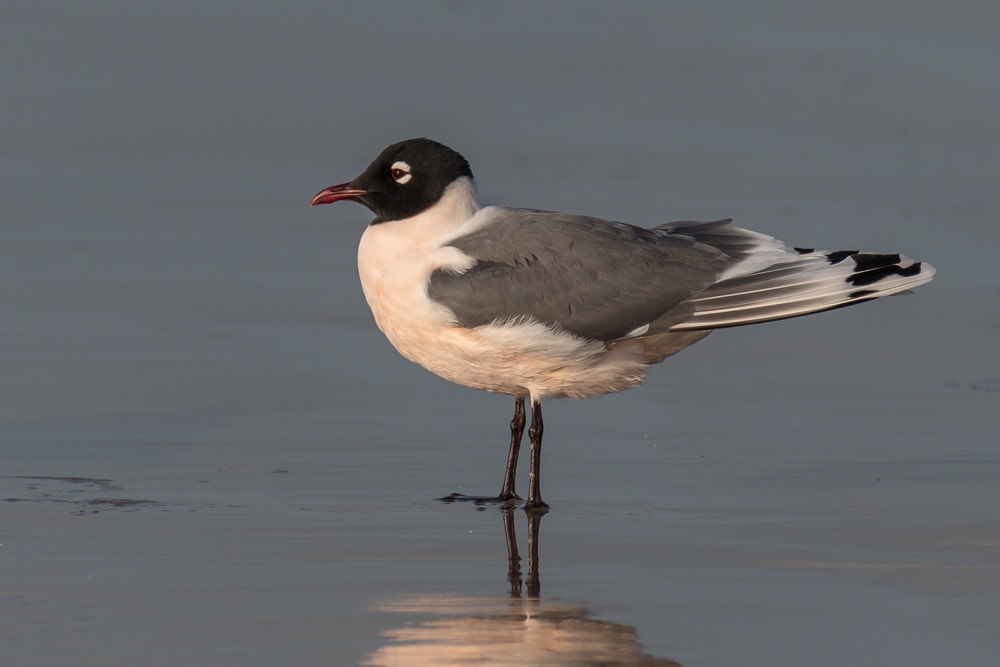
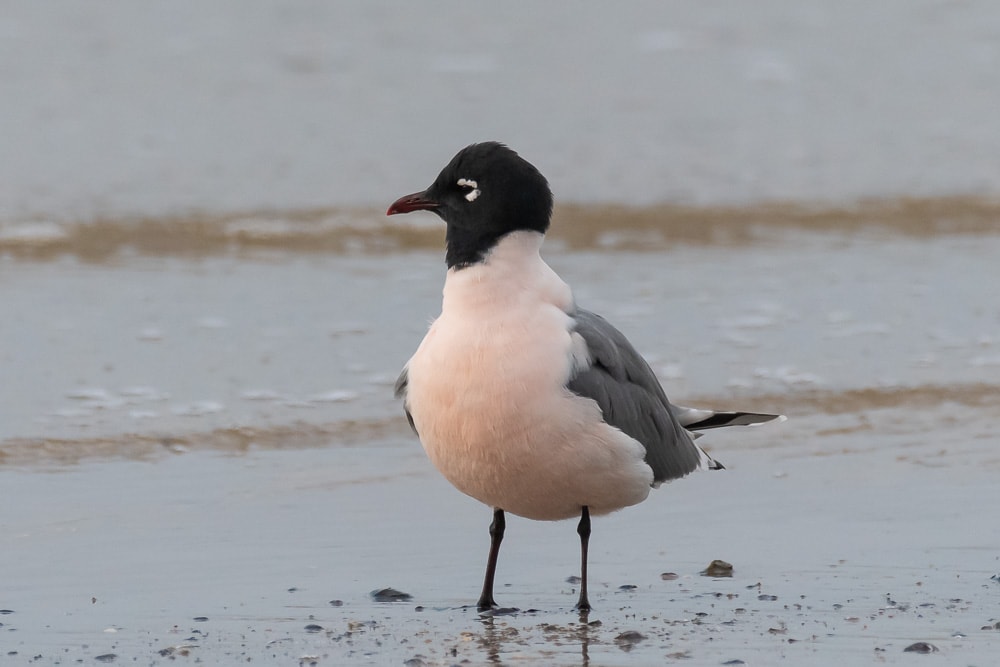
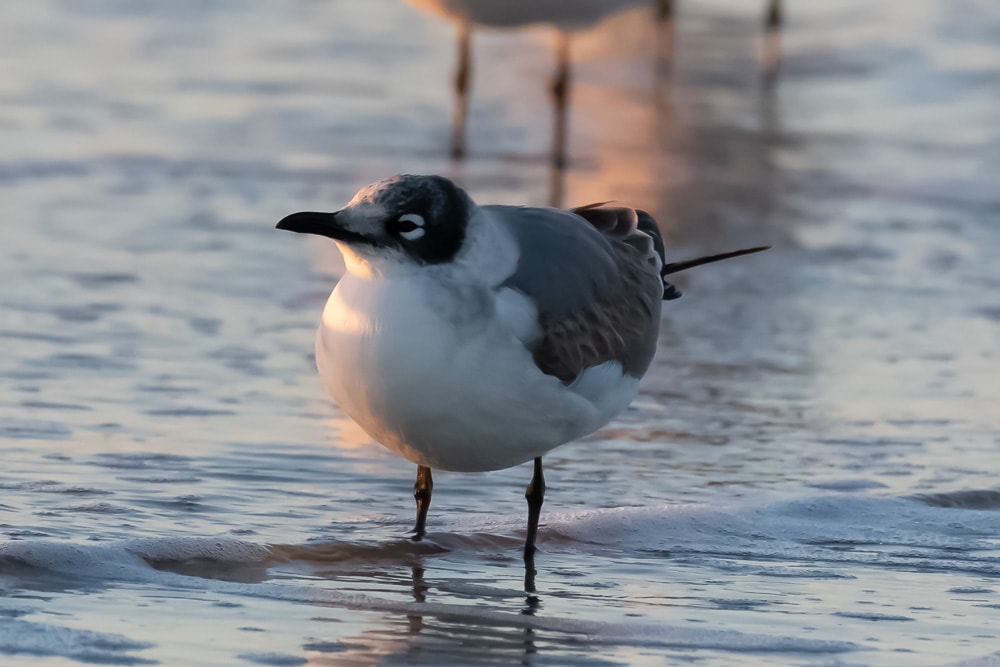
This Franklin’s Gull 1st winter individual lingered along Galveston Bay from early December 2022 until at least mid February 2023. This bird had damage to the outer primary feathers on its left wing. It could fly and appeared otherwise healthy, however the flight feather damage seemed to have grounded it in Texas for part of the winter instead of the Southern hemisphere.
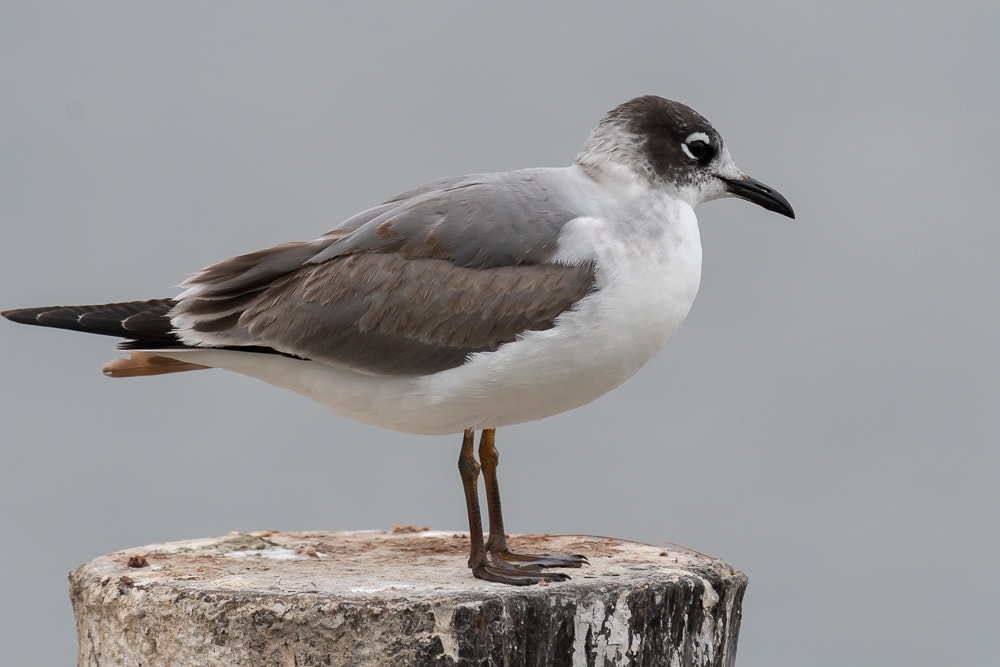
Note the body size difference and the bill size and shape in the side by side comparison below of the two most common black-headed gulls in Texas


Although not a black-headed gull, The Black legged Kittiwake could be confused with a winter Bonaparte’s Gull at first glance. The immature Kittiwake has a black spot behind the eye similar to Bonaparte’s, but in addition it has a black collar on the back of the neck. An adult non breeding kittiwake has the spot, but sports a yellow beak. Black legged Kittiwakes are very rare in coastal Texas. The image below was a single day sighting in early Dec 2022.
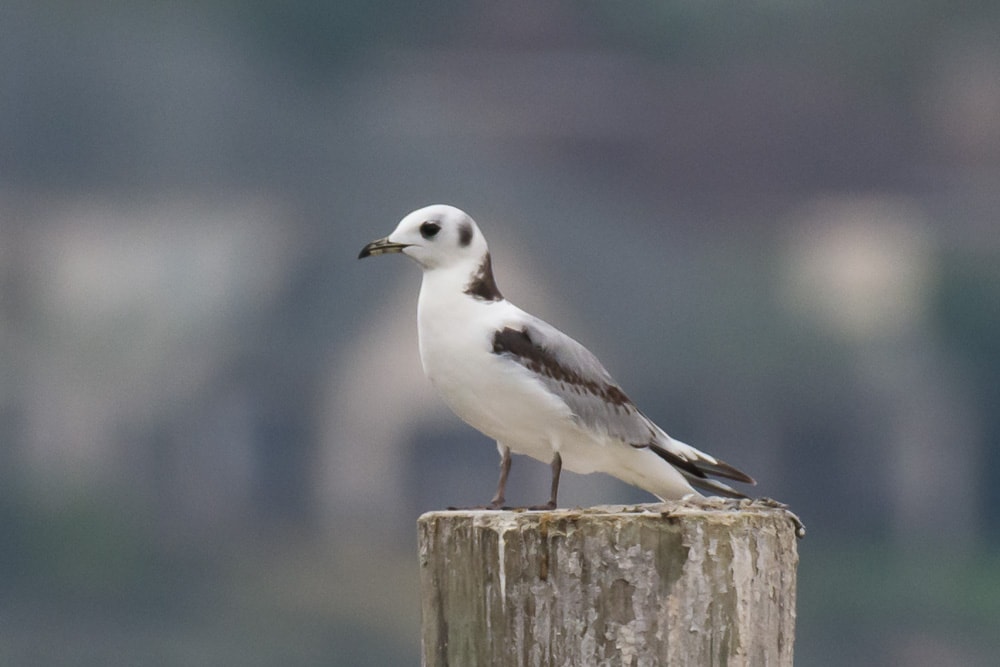
This article is not intended to give a life history of black-headed gulls in Texas, rather an introduction to the three most commonly seen along the Texas coast. More in depth information including sightings and images can be found at Cornell University.
Hi, I saw your gorgeous photos on ebird in the Houston (Harris County) area and just had to look at your site. Just wanted to say thanks for sharing such wonderful photos!!! I’ve really enjoyed them!!!
Thanks for the kind words!